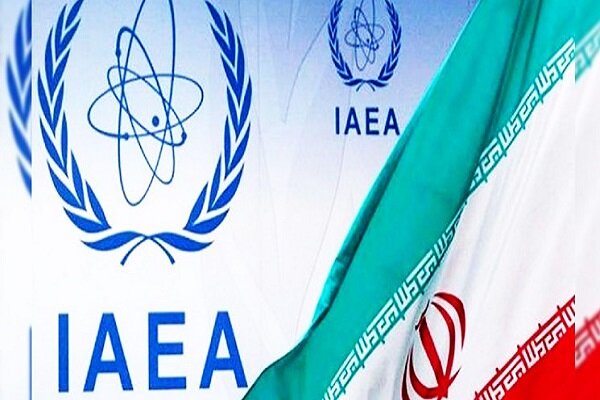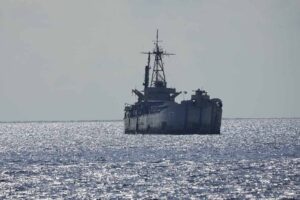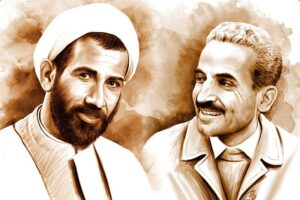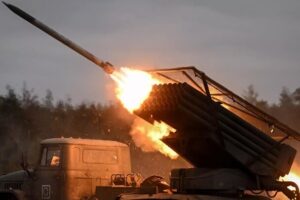
Following the publication of the Director General’s reports to the Board of Governors of the International Atomic Energy Agency, the Permanent Representative of the Islamic Republic of Iran to the United Nations Office and other international organizations based in Vienna announced their opinions and considerations in the form of an explanatory note.
The full text of the communication by Iran’s mission to the IAEA is as follows:
Atoms for Peace and Development
Information Circular
INFCIRC/1183
Date: 7 March 2024
General Distribution
Original: English
Communication from the Permanent Mission of the Islamic Republic of Iran to the Agency
On 5 March 2024, the Secretariat received a Note Verbale, together with an attachment, from the Permanent Mission of the Islamic Republic of Iran to the Agency.
As requested, the Note Verbale and its attachment are herewith circulated for the information of all Member States.
INFCIRC/1183
Attachment
Permanent Mission of the Islamic Republic of Iran
to the United Nations Office and other International Organizations in Vienna
Explanatory Note
on the Reports of the Director General to the IAEA Board of Governors entitled “NPT Safeguards Agreement with the Islamic Republic of Iran” (GOV/2024/8 – 26 February 2024)
as well as “Verification and Monitoring in the Islamic republic of Iran in light of United Nations Security Council resolution 2231 (2015)”
(GOV/2024/7 – 26 February 2024)
The Permanent Mission of the Islamic Republic of Iran to the United Nations Office and other International Organizations in Vienna would like to share its comments and observations on the Director General Reports to the IAEA Board of Governors GOV/2024/8 and GOV/2024/7 as follows:
General Comments
The Islamic Republic of Iran has complied fully with its obligations including Comprehensive Safeguards Agreement (INFCIRC/214) and has done its utmost to enable the Agency to effectively carry out its verification activities in Iran, including C/S measures on Iran’s nuclear material and activities.
The separation of issues divided under two different reports has not been duly respected. Some JCPOA related matters have been repeated in the NPT Safeguards report and vice versa, some NPT Safeguards related matters can been seen in the JCPOA report. As an example, verification and monitoring activities related to manufacture of centrifuges rotor tubes and bellows, which are defined in the scope of JCPOA, should not be reported under the NPT Safeguards Agreement Agenda Item.
Following the United States’ unlawful withdrawal from the JCPOA in May 2018 and failure of the E3/EU to fulfill their commitments, in exercising of its rights under paragraphs 26 and 36 of the JCPOA, Iran had ceased all voluntary transparency
measures beyond its Comprehensive Safeguards Agreement (CSA), including implementation of Modified Code 3.1 (as specified in paragraph 65 of Annex I to the JCPOA) in February 2021.
Iran’s decision to cease performing its commitments under the JCPOA was fully in accordance with its inherent rights under paragraphs 26 and 36 of the JCPOA and in response to the U.S. unlawful withdrawal from the JCPOA, coupled with the E3’s inability to uphold their commitments. This blatant fact, by no means, can constitute a basis for E3 to refrain from implementing their commitments.
The E3’s decision to refrain from implementing their sanctions-lifting commitments specified in Paragraph 20 of Annex V of the JCPOA on Transition Day (18 October 2023) was an unlawful act and another explicit instance of significant non-performance of their commitments in violation of both the JCPOA and the United Nations Security Council Resolution 2231.
On the issue related to the so-called two locations, it should be underlined that the origin of the issue goes back to the allegations primarily posed by an ill-intended third party, namely the Israeli regime, which does not have a single commitment to any WMD instruments, including in particular the NPT, and repeatedly threatens to attack Iran’s nuclear facilities and installations devoted to peaceful purposes, contrary to the numerous GC resolutions, including in particular 407, 1983; 444, 1985; 475, 1987 and 939, 1990, none of which has been respected by this regime. The regime has been so rude that most recently has threatened Iran to nuclear attack. Netanyahu’s statement which was broadcasting live across the world said that “Iran must face a credible nuclear threat” and his heritage minister said “dropping a nuclear bomb would be one of the options to attack Hamas is also recalled.
Unfortunately, the assessments of the Agency is based on unreliable information and unauthentic documents provided by a regime which not only constantly plotting against Iran’s relation with the Agency, but also committing sabotages, attack, and threat of attack against Iran, along with its brutal policy well known to international community.
In light of further cooperation with the Agency, in recent years, Iran implemented voluntary measures in the framework of several Joint Statements including the 4th March
2023.
Comments on the NPT Safeguards report (GOV/2024/8), Background:
On para. 2 of the report which states: “The comprehensive evaluation of all safeguards- relevant information available to the Agency is essential in ascertaining that there are no indications of the diversion of declared nuclear material from peaceful nuclear activities, no indications of undeclared production or processing of nuclear material at declared facilities and locations outside facilities (LOFs), and no indications of undeclared nuclear material and activities in a State with a comprehensive safeguards agreement”. Regarding this argument, the following observations need to be highlighted:
The Agency’s reference in footnote 4 of GOV/2024/8, is applicable to those States having CSA and AP in force as reflected in annual SIRs: “to ascertain that there are no indications of undeclared nuclear material or activities in a State, the Agency needs to carry out an evaluation of the consistency of the State’s declared nuclear programme with the results of the Agency’s verification activities under the relevant safeguards agreements and additional protocols…”.
Bearing in mind that Iran’s commitment is only limited to the CSA, it is a matter of concern that such approach is applied on Iran.
The Director General on different occasions in the report has expressed his sentiment by using words which are not objective, professional and technical explanation, but rather is a political approach which should have been avoided. The DG’s reference to “insufficient cooperation” totally overlooks Iran’s cooperation with the Agency rendered in different fields including under the Joint Statements.
With respect to paragraph 6 of the report (GOV/2024/8), it has to be noted that time and again the Islamic Republic of Iran has reiterated that there has never been any location to be declared under the CSA, including through INFCIRC/1159 dated 23 November 2023, INFCIRC/1131 dated 14 September
2023, INFCIRC/996 dated 7 June 2022 and INFCIRC/967 dated 3 December 2021. Furthermore, the Agency’s claim of undeclared locations has not been
supported by authentic safeguards-relevant information, documents and evidences.
On the para. 8 of the report “…the Agency’s assessment of the undeclared nuclear related activities that were undertaken by Iran at ‘Marivan’ remains unchanged” as it was said in paragraph 6 above, the Agency’s assessment should not be based on unreliable information and unauthentic documents. Furthermore, there is no added value in referring to some previous arguments confirmed by subsequent information which led to resolution of this issue as specified in the previous Director General’s report (GOV/2023/26). However, the details have already been reflected in paragraph 8 of INFCIRC/1094 dated 7 June 2023.
Comment on the Report (GOV/2024/8), Outstanding Safeguards Issues
Regarding para. 9 on Varamin, the followings need to be considered:
As it was frequently explained by the Islamic Republic of Iran, there has never been any undeclared location which is required to be declared under the CSA.
The allegation of existing “undeclared pilot-scale plant used between 1999 and 2003” was not supported by reliable information and authentic documents, rather is based on false and fabricated documents provided by the well-known entity.
The Agency’s reference to a sole poor quality satellite imagery for assessing that “… containers removed from Varamin were eventually transferred to Turquzabad …” is NOT adequate and correct, since there are thousands of similar containers moving around the country. Claim of movement of one container from a location to another, could not be raised and followed by only a poor satellite imagery.
Regarding para. 9 on “Turquzabad”, the following needs to be emphasized as explained before:
The Agency’s assessment is not based on authentic information and evidences. Turquzabad is actually an industrial place encompassing various kinds of warehouses and depots for storing detergents, chemicals, foodstuff, fabrics & textiles, vehicles tire and parts, tubes &joints, and some industrial scraps. The location in such area is not
compatible for storage of nuclear material.
As it has been frequently said, the location in question is an industrial scraps storage which movement of containers is an essential necessity. Removing of containers from an industrial area is the mere evidence for the Agency’s claim that cannot be considered asa solid ground for any allegation. Therefore, the accusation of movement of nuclear material and equipment has no ground. In our intensive investigations into the background of activities carried out at this location, the Islamic Republic of Iran did not find the origin of the particles reported by the Agency. There has not been any nuclear activity or storage in this location. Therefore, no technical clue concerning the origin of reported particles were found. However, the possibility of presence of such particles by sabotage cannot be excluded.
On the Agency’s incorrect assumption of removal of containers intact from the location, the information that proves the Agency’s assumption is not correct has already been provided to the Agency.
The report further states in para. 10, “…the nuclear material particles identified at Varamin and Turquzabad…”. It should be emphasized that:
The phrase “nuclear material particles” being used instead of “uranium particles”, reflected in the report (GOV/20243/8), leads to misinterpretation.
Mere presence of few uranium particles at a location should not be taken as a basis for drawing conclusions by the Agency.
The Agency’s report in Section C.2 states: “In a letter dated 7 February 2024, Iran provided to the Agency the required corrected nuclear material accounting reports. On the basis of these reports, the Agency considers, at UCF, the discrepancy in the nuclear material balance to have been rectified”. It should be mentioned that:
Regarding the PIV at JHL, as reflected in GOV/2015/68 dated 2 December 2015, it has been noted that ”The Agency re-evaluated this information in 2014 and assessed that the amount of natural uranium involved was within the uncertainties associated with nuclear material accountancy and related measurements”.
The uranium metal arising from declared conversion experiments conducted at the JHL (IRL-), received at the Uranium Conversion Facility, UCF (IRK-), has been frequently reported by the operator and verified by the Agency since 2003, for which the relevant 90(a) and 90(b) statements have been subsequently provided with satisfaction each year. Furthermore, this material has been under the Agency’s continuous C/S measures during it was retained at JHL (IRL-) facility and it was still sealed while it was transferred to the UCF (IRK-). Moreover, since there has not been any activity performed on this sealed material, its contents could not obviously be changed.
Based on the technical evaluation of the facility’s operator concerning the associated large error by using the assay of U-236, evaluation of the amount of uranium content in the dissolved waste material by this method used by the Agency was NOT an accurate measure because of large associated uncertainties on the U-236 measurement and also ignoring process procedure for dissolving dirty waste material in large tanks.
In Iran’s letter dated 9 August 2023, it was stressed that the mentioned discrepancy emerged at IRK- facility due to irregular process of recovering uranium from the waste material so called “dirty waste” containing various kinds of unknown elements as impurities. Basically, from technical perspective, such differences in this recovery process is predictable and unavoidable. In addition, it shall not lead to any request for changing in the accounting reports of the origin facility (IRL-).
However, during technical discussions between the Agency and Iran in Vienna on 8 November 2023, a presentation regarding detailed accountancy calculation in IRK- for dirty waste dissolving based on solid technical evidence was provided, which is not reflected properly in this report (i.e. GOV/2024/8). In addition, the Islamic Republic of Iran agreed on conducting additional verification activities at UCF in the near future in order to resolve this technical issue.
The Agency further verification activities in this regard were conducted from 21 to 22 November 2023, 03 to 04 December 2023 and on 20 December 2023. During these follow-up activities at IRK-, the operator demonstrated details of accountancy calculations for U-Metal dirty waste recovery.
In Iran’s letter dated 7 February 2024, the required corrected nuclear material accounting reports was provided to the Agency. The corrected nuclear material accounting reports indicate that all declared amount of uranium contained in the solid waste, sent from JHL to UCF for dissolution, was received at the UCF, but the mentioned discrepancy resulted from recovery activities due to nature of conversion processes.
The Agency in its official available communication with Iran confirmed that the discrepancy in the amount of uranium contained in the solid waste sent from JHL to UCF has been resolved. However, against this conclusion, in para. 15 of GOV/2024/8 and in footnote 23 of GOV/2024/7, the word “rectified” has been used which does not correspond to the communication received from the Agency in this regard. Again, no indication has been given by the Agency about the alteration from resolved to rectified with regard to the previously distributed report (GOV/2024/7) which has subsequently been modified without notice.
Despite providing resolution of the matter in 90(a) statement, the last sentence of para. 38 which reads “This new element requires further consideration by the Agency” is not justifiable and acceptable. Furthermore, it has to be emphasized that during technical discussions on 29 January 2024, both sides agreed that the correction on the reporting would be limited only to IRK- without any reflection to IRL-. Based on this agreement, the IRK- corrected accounting reports were provided to the Agency which was subsequently acknowledged through the afore-mentioned Agency’s 90(a) statement.
Regarding Section C.3 of Safeguards report (Modified Code 3.1), acceptance of implementation of modified Code 3.1 was among the transparency and confidence building measures, reflected in paragraph 65 of Annex I to the JCPOA. Following the U.S. withdrawal from the JCPOA and failure of the E3/EU to fulfill their commitments under the agreement, Iran, in exercising its rights under para 26 and 36 of the JCPOA, decided to fulfill obligations merely under its Comprehensive Safeguards Agreement. However, acting in good faith and in light of understanding reached with the Director General, Iran has already provided the general information on planning of new facilities with and stated that the relevant safeguards information will be provided to the Agency in due time.
Comment on the Safeguards Report, Joint Statement
Regarding para. 24, Iran has repeatedly announced its readiness to carry out mutual cooperation based on good faith and on the contents of the statement. Two important elements of the statement should be taken into considerations, i.e. the framework of the CSA and the agreed modality. It is unfortunate that Iran’s cooperation under the Joint Statement is not appreciated in the Director General’s report but rather the cooperation was purposefully undermined.
In respect of para. 27 of the DG report, it has to be cleared that H.E. Eslami has never questioned the cooperation as specified in the Joint Statement, but in the meeting on 25 September 2023, H.E. Eslami had said that due to Law Passed by the Islamic Republic of Iran’s Parliament: “Strategic Action Plan to Lift Sanctions and Protect Iranian Nation’s Interests”, Iran, in exercising its rights under para 26 and 36 of the JCPOA, decided to fulfill obligations merely under its Comprehensive Safeguards Agreement. One should not expect that while the unjustified unilateral sanctions still continue, Iran will fully implement its commitments under the JCPOA. Therefore, para. 27 of the report is NOT a factual reflection of the meeting, as there exists the possibility of misunderstanding of H.E. Mr. Eslami’s comments.
On Paragraphs 29, 30 and 33 (GOV/2024/8) as well as paras. 25, 26 and 31 in GOV/2024/7 regarding de-designation of Agency’s inspectors, the following facts need to be taken into consideration:
As outlined in Article 9(a)(ii) of the (CSA) between Iran and the Agency (INFCIRC/214), it is unequivocally established that Iran retains the Sovereign prerogative to object to the designation of Agency inspectors, not only at the time of the proposed designation but also at any other time after designation has been made.
Exertion of this right, by no mean impacts, directly or indirectly, the ability of the IAEA to conduct its inspections in Iran.
While the Islamic Republic of Iran accepted the designation of 14 new proposed inspectors of the Agency on two occasions (October 2023 and February 2024), but unfortunately, this matter was not faithfully reflected in the report.
Currently, total number of 120 designated inspectors is available to the Agency for the Islamic Republic of Iran. This clearly shows Iran’s willingness to enable the Agency to carry out its mandate benefiting from the expertise of various inspectors.
About the comment made in para. 34, it is worth to be indicated that in this meeting, Iran clearly mentioned how it will provide the Agency with further information and if needed the access, but this part of H.E. Eslami’s comment has been ignored in the report.
Comments on the report (GOV/2024/8), Summary
The Islamic Republic of Iran is of the view that while its cooperation with the Agency is in right track, expressing sentiments of regret in the report for something which is still ongoing is unnecessary.
Further to the explanation provided under para. 18 above, it has to be reminded that the DG report did NOT reflect in footnote 33 completely. The last critical part of the footnote which concludes “The Agency re-evaluated this information in 2014 and assessed that the amount of natural uranium involved was within the uncertainties associated with nuclear material accountancy and related measurements” has been ignored. Instead, a very unusual conclusion which reads “This new element requires further consideration by the Agency” has been mentioned.
Iran voluntarily granted access and provided information and clarification to the Agency on these locations. This was despite the Agency did not present authentic documents to Iran concerning its claim on “undeclared nuclear material and nuclear-related activities”, and Iran was and is not obliged to consider unauthentic and fabricated documents as Safeguards-related information and to respond the Agency’s requests; however, unfortunately, the Agency considers all fabricated
documents and fake information provided by the Israeli regime as authentic. This has led the Agency to conclude wrong and unreliable assessment accordingly.
On para. 42 of Safeguards report, The Director General unfairly “continues to strongly condemn” what he has called “Iran’s sudden withdrawal of the designations of several experienced Agency inspectors…”, it should be mentioned that the Director General is expected to report factually and not sentimentally. Therefore, the expression of “strongly condemn” is not professional and needs to be avoided. Furthermore, the Islamic Republic of Iran expresses its concern over the politicization of this matter, as reflected in politically motivated and counterproductive statements and reports that singularly criticize and condemn Iran for exercising its legitimate rights. The Agency is needed to respect fully Iran’s rights under the CSA including Article 9. Any attempt to deny or violate Iran’s sovereign rights would not be accepted.
Reference of the Director General to the Joint Statement (para. 43), it has to be noted the Joint Statement per se is voluntary and its best fulfillment needs mutual good faith. One should not expect that only Iran accept the burden of fulfillment without other side best efforts. Furthermore, those voluntary measures are pending on modalities to be agreed upon.
In response to para. 44, as it has been officially stated in several occasion that nuclear weapon has never been in the defense doctrine of the Islamic Republic of Iran. Therefore, there is no ground for any interpretation of the public individual statements. The Director General is not expected to make safeguards conclusion or statement based on the individual’s views. This conclusion neither professionally nor legally is justified.
Conclusion
The Islamic Republic of Iran has so far rendered its full cooperation under the CSA to the Agency. It has to be re-emphasized that all Iran’s nuclear material and activities have been completely declared and verified by the Agency.
The Islamic Republic of Iran rightfully expects that the Agency conducts its reporting on verification activities in Iran based on the principles of impartiality, professionalism, and objectivity.
It has to be re-emphasized that all Iran’s nuclear material and activities have been completely declared to the Agency and has gone through a very robust verification system. Although, the Islamic Republic of Iran has no obligation to respond to the Agency’s questions based on fabricated and unauthentic documents, however, on a voluntary basis and cooperative manner, Iran provided all necessary information, supporting documents and granted accesses requested by the Agency.
The Islamic Republic of Iran, once again, stresses the importance and value of cooperation extended to the Agency. This constructive cooperation should not be undermined by short-sighted political interests. Accordingly, the Agency has the responsibility to show wisdom in addressing such issues in a diligent manner in order to avoid distorting the bigger picture on cooperation between Iran and the Agency.
MNA




